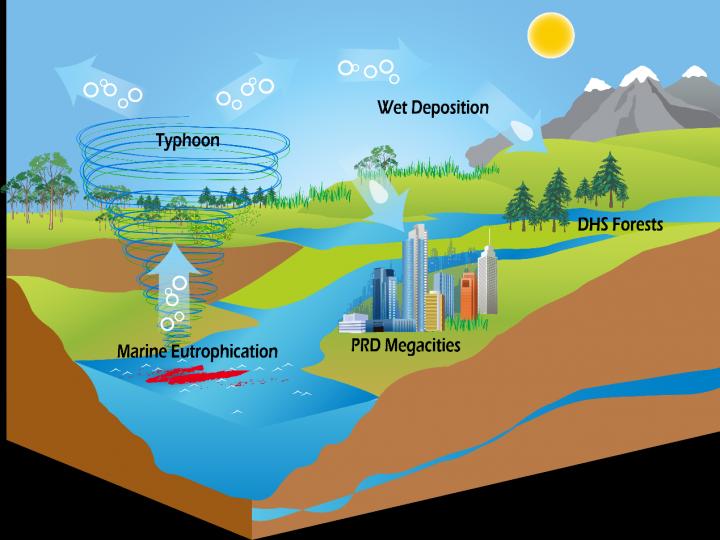Typhoons and marine eutrophication are probably the missing source of organic nitrogen in ecosystems

Typhoons and marine eutrophication are probably the missing source of organic nitrogen in ecosystems Credit: Ming Chang
In recent years, with the reduction of anthropogenic inorganic nitrogen emissions, interest in organic nitrogen (ON) has increased because it represents a large fraction of total nitrogen.
Given this large amount of ON deposition, researchers are interested in identifying its sources. However?scientists find large gaps between ON deposition and emission?and therefore suspect that there are missing sources of ON.
In a paper recently published in Atmospheric and Oceanic Science Letters, Dr. Ming Chang from the Institute for Environmental and Climate Research, Jinan University, and his coauthors, try to address this concern based on their recently completed preliminary work on the deposition-emission relationship.
“We classified observed flux data of dissolved ON in terms of the attributes of the wet deposition event itself, such as the season, precipitation, air mass backward trajectory, and effect of typhoons. The reverse trajectories of each air mass responsible for high ON flux precipitation events were tracked and superimposed with chlorophyll-a concentration maps in the ocean,” says Dr. Chang.
According to this study, approximately one third of the total wet deposition of ON was found to be derived from a confluence of three factors: rain in the wet season, air masses from the ocean, and rainfall over 50 mm.
It was also found that the co-occurrence of intense events, such as a typhoons and eutrophic surface sea waters, might be an important source of dissolved ON in wet deposition.
“However, further quantitative and targeted research is needed to confirm the validity of these possibilities,” adds Dr. Chang.
Media Contact
More Information:
http://dx.doi.org/10.1080/16742834.2019.1679016All latest news from the category: Ecology, The Environment and Conservation
This complex theme deals primarily with interactions between organisms and the environmental factors that impact them, but to a greater extent between individual inanimate environmental factors.
innovations-report offers informative reports and articles on topics such as climate protection, landscape conservation, ecological systems, wildlife and nature parks and ecosystem efficiency and balance.
Newest articles

Superradiant atoms could push the boundaries of how precisely time can be measured
Superradiant atoms can help us measure time more precisely than ever. In a new study, researchers from the University of Copenhagen present a new method for measuring the time interval,…

Ion thermoelectric conversion devices for near room temperature
The electrode sheet of the thermoelectric device consists of ionic hydrogel, which is sandwiched between the electrodes to form, and the Prussian blue on the electrode undergoes a redox reaction…

Zap Energy achieves 37-million-degree temperatures in a compact device
New publication reports record electron temperatures for a small-scale, sheared-flow-stabilized Z-pinch fusion device. In the nine decades since humans first produced fusion reactions, only a few fusion technologies have demonstrated…





















